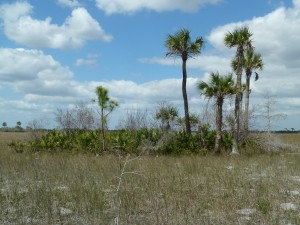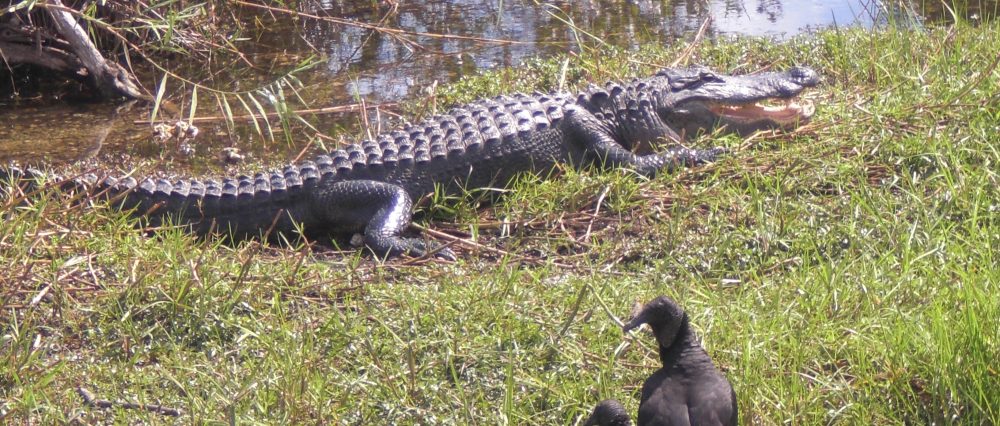Panthers cling to survival in Big Cypress
By Carmine Colangelo
Majestic, powerful, iconic, elusive and endangered; all of these words can be used to describe the Florida panther, but endangered is the word that matters most.
The Florida panther, which is the state’s animal, lives in the swamps and forests of Southern Florida and much of that habitat has been destroyed over the years due to extensive urbanization. As its land was depleted, so was the species. At one point their population dwindled to about 30.
More recently however the populations have been increasing.
“We’re optimistic in the fact that the panther population has increased strongly from about 30 cats in the 1990’s to about 120 to 160 cats now,” said Bob DeGross, the chief of interpretation at Big Cypress National Preserve. “The challenge we have is that there is a carrying capacity. We’re optimistic that we can reach the carrying capacity
for the amount of public land that exists in South Florida.”
But DeGross says the next challenge may not be the carrying capacity, the amount of land that can handle the big cats, but a social capacity. There is a large looming fear of panther attacks, which have caused many people not to want more panthers around. According to DeGross this fear largely stems from the stigma of the widely publicized mountain lion attacks on people in California.
There has been no report of a Florida panther killing a human, however.
Big Cypress National Preserve has also been working with the Florida Wildlife Commission to monitor the panthers with tracking collars. The number of collared panthers has climbed to 211 after the most recent tracking season, which ended in February of this year. Although this number is above the estimated number of living panthers, it shows how many have been collared since the project began in the late 1970s and early 80s. Since that time, collared panthers have died and agencies have began tracking new cats, which explains the discrepancy according to DeGross. The seasons for collaring cats lasts for about six months and in the last season nine panthers were collared.
A male panther requires roughly 200 square miles of land to roam and hunt. The female requires about 80 square miles in order to sustain their lifestyle. Almost 95 percent of the panther’s natural habitat in Florida has been destroyed since the mid-1800s when Florida’s obsession was construction and land development.

Tree islands such as this one in Big Cypress provide ideal habitat for panthers — Photo by Caitie Parmelee
The mixing of people and panthers in what was formerly the panther’s property has not gone well since the late 1800s when farmers believed the animals were killing livestock. Panther hunting became encouraged behavior once they had a $5 bounty placed on their heads. More recently automobiles have also been a large contributor to panther deaths since the roads and highways intersect the panther’s habitat. Between 1995 and 2009 there were 112 panthers killed by vehicles.
Actions are being taken in hopes that the panther will continue to grow and survive in Florida. The first step came when the federal Endangered Species Act of 1973 was passed and the panther was among the first animals on the list of protected endangered species.
In order to help limit the amount of panther deaths by vehicle, fencing has been installed along major highways the traverse the panther habitat. The fencing has created an underpass for wildlife to cross highways safely and keep them away from vehicles.
One of the main places where panthers are being protected in Florida is the Big Cypress National Preserve. Founded in 1974, Big Cypress is a 720,000 acre preserve located in South Florida and is a primary home to the panthers.
One of the main efforts to restore the population in the park was the introduction of cougars from Texas to repopulate the panthers. Cougars were flown in, successfully mated, and then moved back to Texas. The offspring are still considered to be Florida Panthers.
“It really was the genetic shot in the arm that the population needed,” said Eleanor Hodak, a ranger at Big Cypress. “Slowly and steadily the population is rising.”
Not only were the cougars important in bolstering the panther population, but they added much needed genetic diversity. Panthers have struggled with genetic defects before the introduction of cougars. Panthers would suffer defects due to inbreeding from a lack of panthers.
Efforts to relocate panthers in Alabama, Georgia and other parts of Florida, which was part of their range, have been less successful. This relocation was protested because residents in the area did not want a major predator reintroduced into the area. The stigma of animal attacks and panthers attacking livestock and pets still looms in the public’s mind.
With all that is being done to protect the panthers, DeGross believes that the key in the creature’s survival is held by governmental bodies. “In order to increase the size of the population the state and the federal government needs to look at creating and maintaining wildlife corridors of the state,” said DeGross. “The only way it is going to survive is if more land is set aside.”

